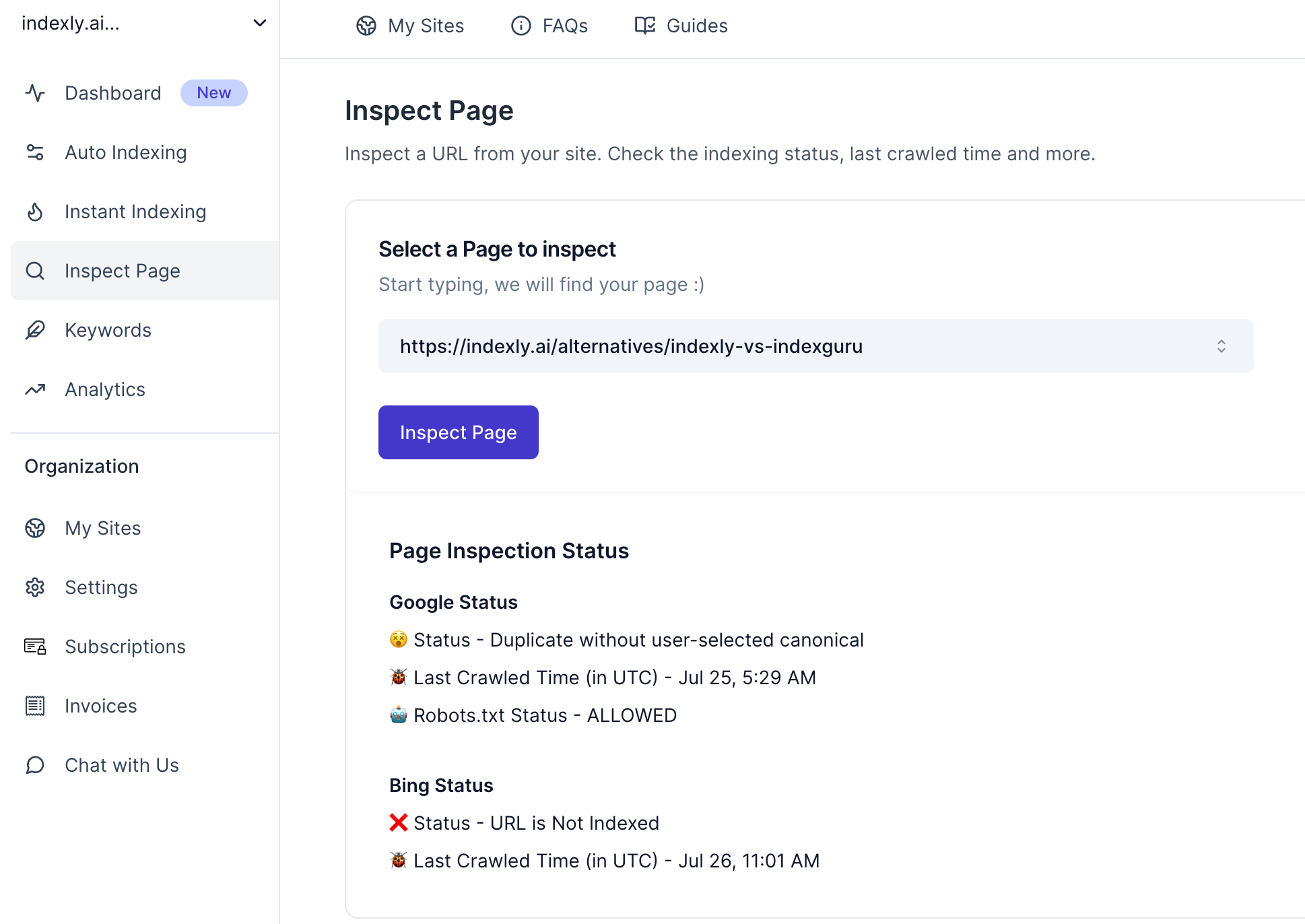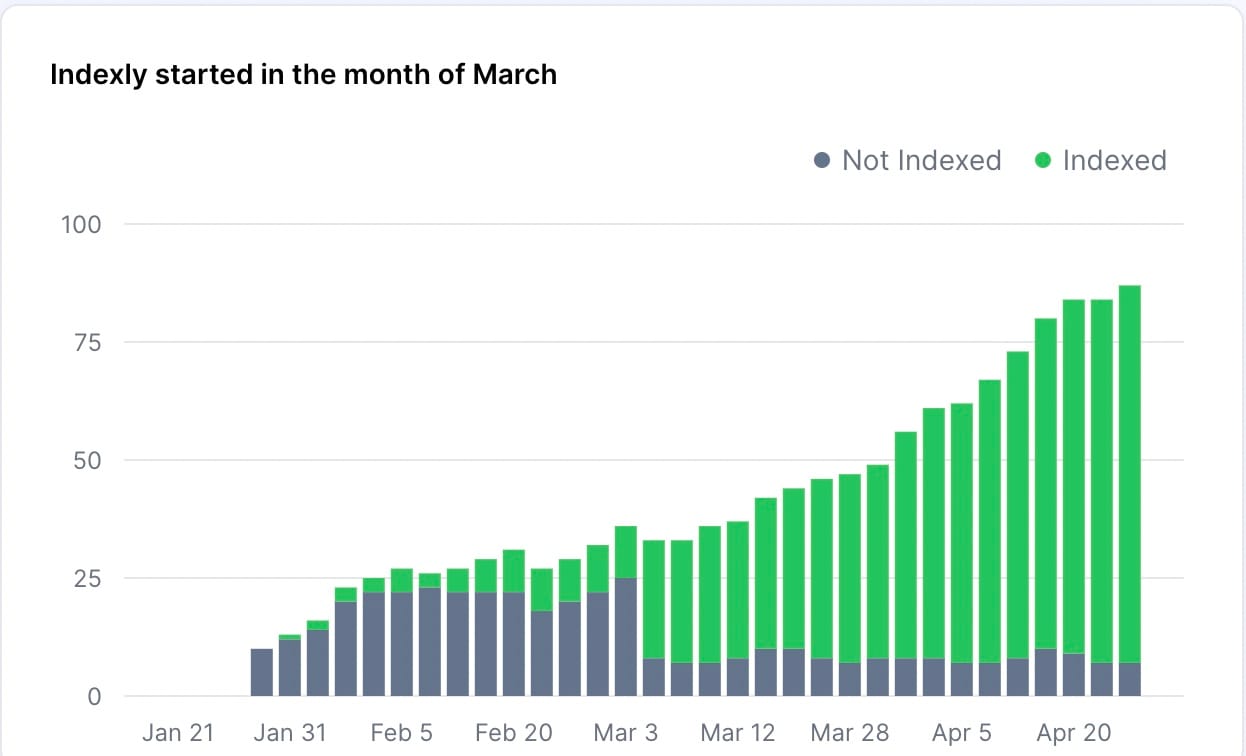How to fix - “Crawled - currently not indexed”
Are you facing "Crawled - Currently Not Indexed" issues in the Google Search Console? Explore effective tips and strategies to resolve this problem and improve your site's SEO.

The "Crawled - currently not indexed" status in Google Search Console indicates that Google has crawled the page but has chosen not to include it in its index. This means that the page will not appear in search results. Understanding this status is essential for website owners and content creators, as it can impact the visibility of their content.
What Does "Crawled - Currently Not Indexed" Mean?
When you see the "Crawled - currently not indexed" status, it means:
- Crawling: Googlebot has visited the page and analyzed its content.
- Not Indexed: Despite being crawled, Google has decided not to add the page to its index, hence it won't appear in search results.
The "Crawled - currently not indexed" status is part of the "Excluded" category in Google Search Console's Index Coverage report. It means that while Google has discovered and crawled your page, it has not been added to the search index for various reasons.
It is important to note that Google does not provide specific information about why your pages were not indexed. However, there are a few common reasons listed below for this error to occur:
Common Reasons for "Crawled - currently not indexed
- Poor content quality: Google may consider your page's content to be of low quality, thin, or lacking in value compared to competing pages.
- Duplicate content: If your page is a near-duplicate of another page on your website or elsewhere on the web, Google may choose not to index it.
- Technical issues: Problems such as server errors, incorrect robots.txt configuration, or the presence of
noindextags can prevent Google from indexing your pages. - Weak internal linking: Pages with insufficient internal links from other pages on your website may not be prioritized for indexing by Google.
- Low domain authority: If your website has a low domain authority, Google may be more selective in indexing your pages, especially if you publish content faster than Google can process.

Fix your web page with the error "Crawled - currently not indexed"
- Please review the content on your pages to ensure it is unique, high-quality, and valuable to users.
- Verify that your robots.txt file is not blocking Google from crawling your pages.
- Check for the presence of
noindextags in your page's source code. - Improve your internal linking structure by adding more links to important pages from other high-quality pages on your website.
- Assess your page load speed using tools like Google PageSpeed Insights and optimize for faster loading times.
- Use the URL Inspection tool in Google Search Console or Indexly to request a re-crawl and re-index of your pages.
- Build high-quality backlinks to your pages from reputable websites to signal their value to Google.
- Monitor your website's indexing status regularly and address any emerging issues promptly.
Explaining how to perform quality checks manually
Here are a few checks you can do manually to find out the reason behind it:
- Poor Internal Linking: Pages may not have sufficient internal links pointing to them, making it difficult for Google to recognize their importance. To resolve this, ensure that important pages are well-linked from other relevant pages within your site. To view the sitemap of your website use this free XML sitemap viewer
- Low Content Quality: If Google determines that the content does not meet quality standards or user intent, it may choose not to index it. Review the content to ensure it provides value and is better than competing pages. Consider enhancing the content's depth and relevance.
- Duplicate Content: If the page is a duplicate of another, it may be excluded from indexing. Use canonical tags to indicate the preferred version of the content.
- Low Domain Authority: If your site has a low domain authority, Google may limit the number of pages it indexes. Building backlinks can help improve domain authority and increase the likelihood of indexing.
- Technical Issues: Check for technical issues such as:

How to Fix “Crawled- Currently Not Indexed” Error Using Indexly
To fix the "Crawled - currently not indexed" error in Indexly, follow these steps:
1. Inspect Affected URLs:
You can log in to Indexly and use the Indexly URL Inspection tool to check the specific reasons why a page is not indexed. This tool can provide insights into any technical issues.

2. Audit Your Site:
Conduct a thorough audit of your site to identify potential issues. Make Necessary Changes: Based on the findings:
- Improve internal linking.
- Enhance content quality.
- Remove any
noindextags if applicable. - Correct any server errors or robots.txt issues.
3. Steps to Fix the Error with Indexly
Step 1: Connect Your Website
To begin fixing the 'Crawled - Currently Not Indexed' error using Indexly, you first need to connect your website to the platform.
- Sign up for an Indexly account.
- Follow the prompts to add your website by verifying ownership.

- Once connected, you can access site analytics.

Step 2: Submit a Reconsideration Request
After conducting an audit and implementing the fixes, you can follow the steps:
- From your Indexly dashboard, identify the pages flagged with the 'Crawled - Currently Not Indexed' error.
- Click on the submission option by clicking index to send a reconsideration request for those pages.
- After checking the quality of your page and content, Google can take a few days to weeks to index your pages. Instead, you can log in to Indexly and use the Instant indexing feature to submit your pages for indexing. The Indexly dashboard will display the status of your page once it's indexed.
- Describe the changes made to improve the quality or functionality of the pages.


Step 3: Regularly audit Your Site's Content
Regular content audits are vital for maintaining a healthy website. Use Indexly's analytics features to:
- Identify low-quality or duplicate content.
- Rule out technical issues such as broken links and slow load times.
- Adjust the user experience to meet search engine guidelines.
Conclusion
Dealing with the 'Crawled - Currently Not Indexed' error can be daunting, but you can effectively resolve it with the right tools and strategies. Indexly streamlines the indexing process and provides valuable insights to enhance your site's performance. By taking a proactive approach and adhering to SEO best practices, you can significantly improve your chances of getting your content indexed and driving organic traffic to your site.


Best Practices to Avoid "Crawled - currently not indexed"
- Regularly monitor Google Search Console for crawl errors and indexing issues.
- Create high-quality, unique, and valuable content that stands outyou can effectively resolve it with the right tools and strategies.
- Ensure your website is mobile-friendly and use the Mobile-Friendly Test tool in Google Search Console to check and improve compatibility.
- Implement canonical tags accurately to guide search engines toward the preferred version of your pages.
- Use robots' meta tags appropriately to align with your indexing goals.
- Regularly update and refresh your content to keep it relevant and valuable.
- Create and submit an XML sitemap to Google Search Console to assist search engines in understanding your website's hierarchy and content.
FAQ Section
1. What does “Crawled – Currently Not Indexed” mean? This status indicates that Google has crawled your page but hasn’t indexed it, meaning it won’t show up in search results.
2. How long does it usually take for Google to index a page? Indexing time can vary, but it often takes anywhere from a few hours to a couple of weeks.
3. Can I request indexing manually? Yes, you can request indexing through Google Search Console.
4. Does social media sharing affect indexing? While social media does not directly influence indexing, it can increase traffic and encourage more crawling.
5. What is the best way to enhance content for indexing? Focus on quality, originality, keyword optimization, and relevance to your audience's needs.
6. How does website authority influence indexing? Higher authority domains are more trusted by Google, resulting in a higher likelihood of their pages being indexed.



